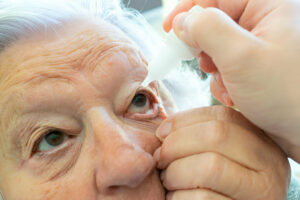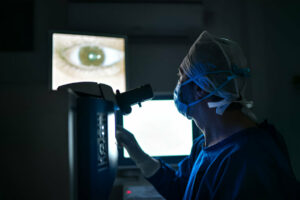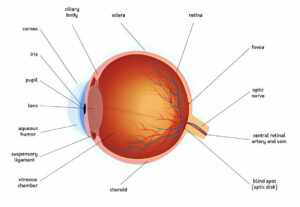Eye disease trachoma is caused by infection with Chlamydia trachomatis bacteria and remains one of the primary infectious and preventable blindness causes worldwide, particularly among rural communities and children. Transmission occurs via direct eye-and-nose contact, shared towels/clothes or even flies that come into contact with eye discharge.
Causes
Trachoma is an eye infection caused by Chlamydia trachomatis bacteria and is one of the primary causes of blindness worldwide. Primarily occurring in undeveloped nations with poor hygiene standards, Trachoma spreads via contact with eye, nasal and throat fluids of infected individuals–even young children–or touching objects contaminated by them such as towels or clothing that have come into contact with these fluids, or through flying insects who come in contact with these fluids and become carriers for this infection.
Most people infected with trachoma initially don’t experience any noticeable symptoms of infection. Over time, however, scarring develops in the upper conjunctiva (the membrane that lines eyelids) which causes eyelashes to turn inward towards cornea and rub against it, potentially leading to painful eye ulcers and vision loss. If left untreated this condition progresses into trachomatous trichiasis which eventually leads to irreversible blindness.
Trachoma affects people of all ages; however, children are especially susceptible. Triggering factors for the condition include foreign objects entering the eye – like fingernails – infections and prolonged itching; symptoms usually begin in childhood but due to slow progression may only become apparent as adults.
Trachoma-causing bacteria are easily transmitted between people through close personal contact or handling infected objects. Children are especially prone to contracting this illness and passing it onto others; young children being particularly at risk. Furthermore, infections can spread through contaminated eyes or through using infected swabs on eyes, nose, throat or infected individuals themselves; even by insects that have come in contact with the eyes/nose/throat discharge of individuals infected; it has even been spread between infected eyelashes touching corneas!
Trachoma remains the world’s leading infectious cause of blindness despite being completely preventable, impacting two to four times as many women than men and often leaving them unable to work and support themselves and their family members.
Symptoms
Trachoma, caused by repeated infection with Chlamydia trachomatis bacteria, is the world’s leading preventable cause of blindness and most often affects rural areas of developing countries. Children living in poor hygiene environments can become infected through poor hygiene themselves while adults can also contract the infection which then scars the inner surface of upper eyelids leading to eyelashes rubbing against corneas and permanent vision loss.
Trachoma symptoms typically include watery eyes, itching and inflammation of the eyelids, red and swollen eyelids and skin around them becoming red and infected. Transmission can take place by direct contact with infected person’s eyes, eyelids or nasal or pharyngeal secretions or by touching infected fingers to the eyes, nose or mouth; also through biting insects carrying the bacteria as well as through fomites which contain infectious microorganisms that spread infection among humans – moving quickly between individuals can help spread transmission between individuals as well.
Over time, trachoma symptoms worsen. Swollen eyelids become inflamed and crusty white patches appear on them, while eyelashes begin to turn inward and rub against corneas leading to ulceration and permanent vision loss. Finally, eyelids become so swollen and scarred as to cover most of their pupil.
This third stage is known as trachoma. At this point, the eyelid has become thick and covered in scar tissue, giving a dull luster. Iris appearance may become blue and there may even be an unattractive black line running from below the pupil all the way towards cornea.
The fourth and final phase of trachoma, known as complete cicatrization of the eyelid, results in eyelid loss as blood vessels become visible on its surface and its original appearance has changed to grayish with blood vessels visible through it. Meanwhile, cornea is cherry colored while corneal ulceration has developed centrally on it – in its untreated state trachoma will progress into severe vision impairment and blindness between 30-40 years old.
Treatment
Trachoma is one of the leading causes of preventable blindness worldwide. It occurs as a result of repeated eye strain infections with Chlamydia trachomatis bacteria that differ from its sexually transmitted forms chlamydia. This infection spreads by direct contact between people or through sharing towels and cloths; additionally flies pick up and carry discharge from infected people’s eyes and noses, more frequently occurring in poor rural communities across Africa, Asia, and Latin America where its impact can have devastating results on health and economic productivity alike.
One episode of trachoma does not cause permanent eye damage; however, ongoing infections over time can leave permanent scarring of the upper eyelid and cause it to turn inward (conjunctivitis), allowing eye lashes to rub against and scratch cornea, eventually leading to clouding (neovascularization) of corneal surface and eventually permanent blindness if left untreated.
Antibiotic treatment can significantly lower the risk of long-term complications caused by trachoma. Health care providers can identify it by conducting eye exams that detect symptoms like inflammation of tissue lining the upper eyelid (conjunctivitis), scarring on inner surface of upper lid, and new blood vessels forming on corneal surface. Sometimes they swab swabbing to confirm presence of Chlamydia trachomatis and make diagnosis.
Sometimes trachoma requires surgical treatment. A health care worker will remove inward-turning eyelashes and any dead skin from the cornea; then antibiotics may be prescribed to reduce chances of further infection or prevent progression into trichiasis and blindness.
Trachoma incidence can be significantly decreased when local authorities and non-governmental organizations implement effective community-based prevention programs, including regular handwashing with soap, provision of safe drinking water for bathing and washing purposes, elimination of breeding sites for flies, as well as eliminating breeding spots for them. Furthermore, vaccines against Chlamydia trachomatis strains which cause trachoma have been developed and are being implemented in some countries.
Prevention
Trachoma, one of the primary infectious causes of blindness worldwide, is caused by infection with Chlamydia trachomatis bacteria. In most cases, infection causes itching of eyes and lids as well as painful irritation to cornea. Over time, repeated episodes can result in inward turning eyelashes (trichiasis). Over time this may eventually destroy corneal surface leading to blindness.
Trachoma can be especially devastating to children. In many underdeveloped nations, trachoma is widespread amongst poor communities; particularly prevalent in hot, dry regions where water resources are limited and hygiene conditions poor. Furthermore, infection spreads via dirty fingers sharing or sharing cloths that contain bacteria from an infected person and by flies collecting discharge from eyes and noses of an individual infected by it; twice as likely for female victims than for male ones.
World Health Organization’s SAFE strategy, created to reduce trachoma blindness, involves four activities. They include surgery to correct trichiasis; mass distribution of antibiotics to treat existing infections; facial cleanliness to decrease infectious ocular and nasal discharge, as well as environmental improvement by providing households with access to clean water and latrines. As of 2013, The Carter Center’s Trachoma Program had successfully implemented this strategy in 71 countries using this plan.
At the outset of its trachoma control program, The Carter Center provided annual antibiotic doses donated by Pfizer for treating active infections. This medication proved highly effective and safe; many patients cleared their infection through its use. As part of phase two, screening will occur in every household with children aged one to nine years, correct trichiasis surgery being done as necessary, teaching nurses and community workers how to perform it themselves and teaching nurses on how to perform it themselves.
To combat the disease, we will continue educating people on the importance of good personal and environmental sanitation. To spread our message: “Clear hands, clean faces and a sanitary homestead keep trachoma away!” we will utilize radio programs, community volunteers, school water sanitation workers as well as village sanitation personnel to spread it throughout communities. Furthermore, latrines will be constructed so as to increase household access to clean water sources while improving hygiene levels in households.















